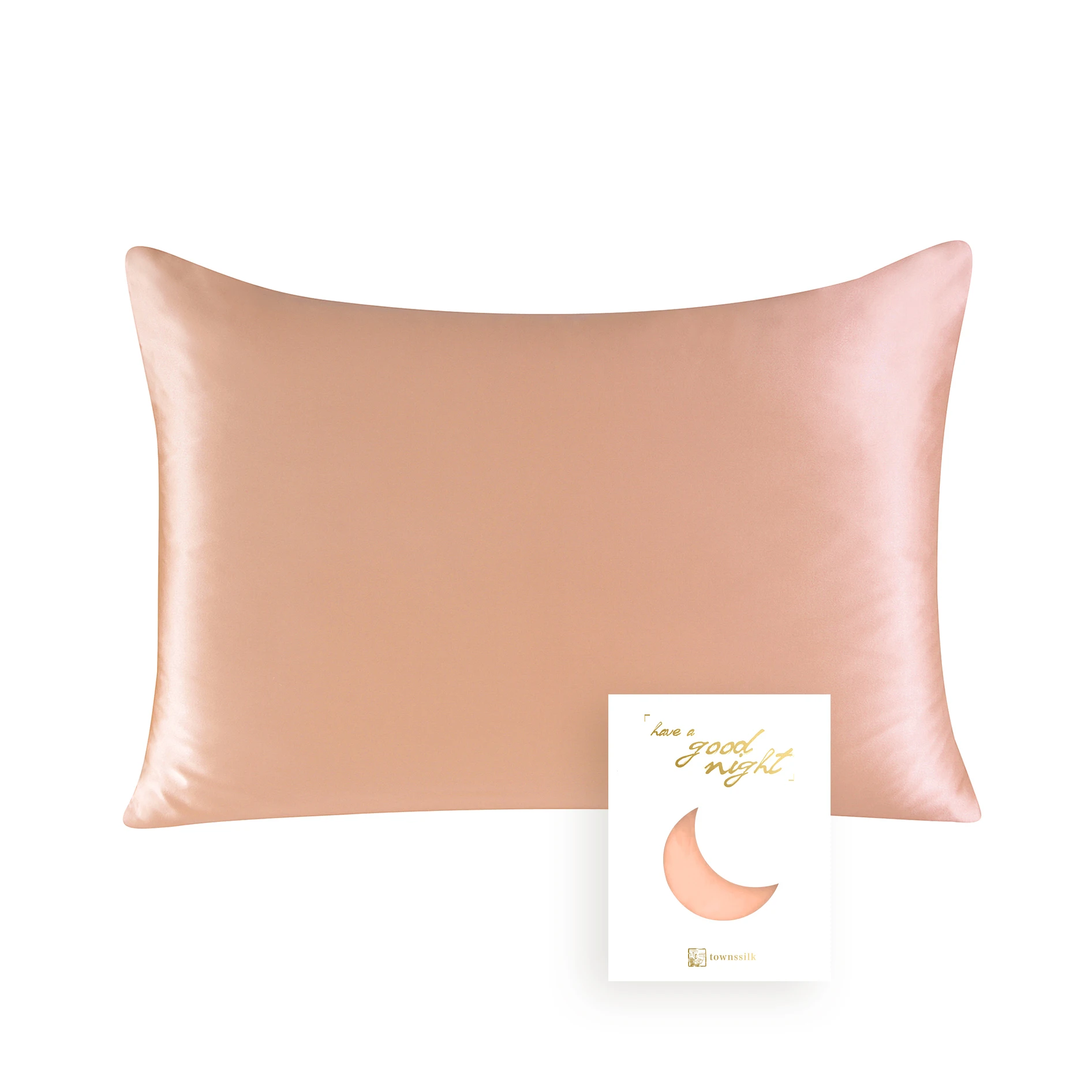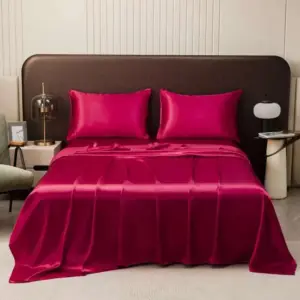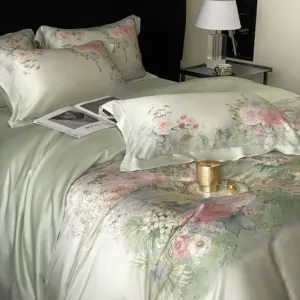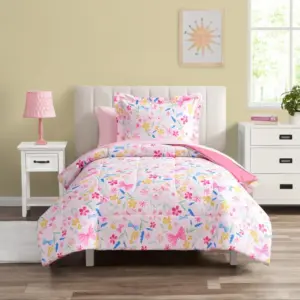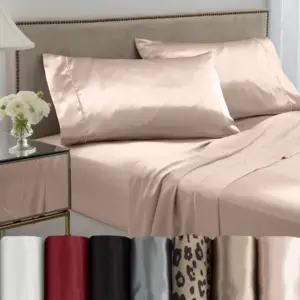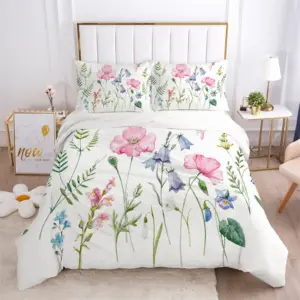Introduction: The Timeless Elegance of Silk in Interior Design
The allure of silk has captivated human imagination for centuries, transforming ordinary spaces into extraordinary sanctuaries of luxury. When we speak of “silk colors,” we’re referring not just to the actual fabric itself, but to an entire aesthetic—one that captures the luminous sheen, depth, and subtle play of light that makes silk so distinctively elegant.
Throughout history, silk has adorned the chambers of royalty and nobility across cultures, from the Imperial palaces of China to the grand chateaus of France. This precious fabric, once worth its weight in gold, brought warmth and softness to stone walls while reflecting candlelight in ways that created magical, shifting atmospheres.
Today, incorporating silk colors into your interior design offers the same transformative potential. The unique way silk captures and reflects light creates rooms that seem to glow from within, while its textural qualities add depth and dimension to any space. The rich color saturation possible with silk provides a level of visual luxury that few other materials can match.
In this guide, we’ll explore how to harness the power of matching silk bedding colors to create truly personalized spaces. We’ll delve into understanding silk’s unique qualities, explore inspired color palettes, and provide practical applications for every room in your home. Whether you’re planning a complete redesign or simply looking to add touches of elegance, choosing perfect silk bedding colors can dramatically elevate your interior spaces with timeless sophistication.
The Distinctive Qualities of Silk and Its Visual Language
What makes silk truly special lies in its natural composition and structure. Unlike plant-based fabrics, silk comprises protein fibers produced by silkworms, creating a material with unparalleled light interaction properties. These triangular prism-shaped fibers refract light from multiple angles, producing that characteristic gentle glow and subtle color shifts as you move through a room.
Natural silk comes in a range of inherent hues—creamy ivories, soft champagnes, and pale golds—colors that result from the silkworm’s diet and environment. These natural tones form the foundation of traditional silk palettes, offering warmth and sophistication without any additional dyes.
Perhaps most remarkable is silk’s exceptional ability to receive and hold color. The protein structure of silk fibers allows dyes to penetrate deeply, resulting in colors of extraordinary richness and complexity. A blue silk doesn’t just appear blue—it contains subtle variations and depths that seem to change with viewing angle and lighting conditions.
The “silk aesthetic” can be defined by several key visual characteristics:
- Luminosity: A gentle, inner glow rather than a harsh shine
- Depth: Colors appear to have layers and dimension
- Mutability: Subtle shifts in appearance depending on light and viewing angle
- Softness: A visual softness that translates to perceived tactile comfort
Understanding these fundamental qualities helps explain why silk bedding color options have such a powerful impact on interior spaces. Unlike flat, matte surfaces, silk and silk-inspired finishes create environments that feel alive, responsive, and luxuriously complex. This knowledge forms the foundation for selecting colors and applications that will truly capture the essence of silk’s unique visual language.
Curating Silk-Inspired Color Palettes for Different Atmospheres
Serene Silk Neutrals
Silk’s natural palette of ivory, cream, and champagne creates spaces of unparalleled tranquility. These colors work particularly well in:
- Bedrooms: Creating a restful sanctuary where warm whites and subtle golden undertones promote relaxation and quality sleep
- Living rooms: Establishing an airy, sophisticated atmosphere that feels both welcoming and refined
- Home offices: Providing a calm backdrop that reduces visual stress while maintaining an elegant professional environment
These neutral silk tones psychologically promote feelings of spaciousness, clarity, and calm. They reflect light beautifully, making them ideal for smaller rooms or spaces with limited natural light. For greatest impact, look for neutrals with just a hint of warmth to capture that characteristic silk glow.
Rich Jewel Tones
The exceptional color saturation possible with silk makes it perfect for dramatic, intense hues:
- Ruby reds: Creating passionate, energetic focal points in dining rooms or entertainment spaces
- Sapphire blues: Bringing depth and sophisticated drama to living areas and bedrooms
- Emerald greens: Offering natural richness and vitality to studies and sitting rooms
- Aubergine purples: Adding mysterious luxury to intimate spaces
These deeper silk-inspired colors work best when balanced with neutrals—perhaps silk-white trim or champagne accents—to prevent overwhelming a space. Consider using these rich tones for statement walls, substantial drapery, or distinctive furniture pieces that anchor a room’s design.
Delicate Pastels
Silk excels at creating pastels with unexpected depth and sophistication:
- Blush pinks: Creating gentle warmth and nurturing environments
- Powder blues: Offering tranquility with a touch of sky-like optimism
- Soft lavenders: Bringing restful, creative energy to spaces
- Pale jades: Introducing subtle natural elements with calming properties
These colors adapt beautifully to seasonal changes—feeling fresh in spring and summer while providing soft contrast to stronger winter decor elements. Best color silk bed sheets in these gentle hues create bedrooms that feel both current and timeless.
Vibrant Silk Route Hues
Inspired by the historic Silk Road trading routes, these colors capture exotic cultural influences:
- Saffron yellows: Bringing warmth, energy and ancient wisdom
- Spice oranges: Creating vibrant, welcoming spaces that stimulate conversation
- Peacock blues: Adding rich, complex color inspired by ancient royal chambers
- Terra cotta reds: Grounding spaces with earthy sophistication
These vibrant options work wonderfully in bedroom color schemes with silk, especially when creating globally-inspired sanctuaries. Consider these bolder choices for spaces where you entertain or want to make distinctive personal statements.
Transforming Walls with Silk-Inspired Finishes
The walls of your room provide the largest canvas for expressing silk-inspired colors and textures. To capture true silk aesthetics, consider not just the color but the finish of your wall treatments:
Paint Finishes That Mimic Silk
Eggshell, satin, and pearl finishes all offer subtle sheen that mimics the gentle luminosity of silk. Unlike flat paints (too matte) or high-gloss options (too reflective), these mid-sheen finishes create the perfect balance of light interaction. When painted in silk-inspired colors, walls seem to glow from within rather than simply reflecting light from their surface.
Dimensional Techniques
To truly capture silk’s complex visual texture, consider specialized painting techniques:
– Color washing: Applying translucent layers of similar colors creates subtle depth
– Glazing: Adding a transparent tinted topcoat creates luminosity
– Subtle ombré effects: Gradual transitions between related colors mimic silk’s natural color variations
Silk and Silk-Look Wallcoverings
For the most authentic silk appearance, actual silk wallcoverings provide unmatched luxury. Modern alternatives include wallpapers with silk-like finishes that capture similar light properties at various price points. These options work particularly well in bedrooms and formal living spaces where their subtle pattern and texture can be fully appreciated.
Strategic Color Placement
Consider how bedding should match wall color when planning your silk-inspired space. Options include:
– Creating a silk-inspired accent wall behind the bed for dramatic focus
– Applying silk-finish paint to ceilings for unexpected luminosity
– Using deeper silk tones in architectural niches or recesses for depth
– Transitioning to complementary silk colors in adjoining spaces for flow
By giving careful attention to both color and finish, walls become not just backdrops but essential elements in creating your silk-inspired sanctuary.

Elevating Spaces with Luxurious Silk Textiles
Window Treatments
Window treatments offer perfect opportunities to introduce actual silk or silk-inspired fabrics into your space:
Light filtering properties: Silk draperies create magical light effects, softly diffusing sunlight while maintaining privacy. Different weights of silk produce varying levels of translucency—lighter silk sheers allow gentle illumination while heavier silk damasks provide more privacy and light control.
Color considerations: When selecting silk draperies, remember that natural light will amplify the colors. A pale gold silk curtain will cast a warm, golden glow throughout the room when sunlight filters through it. This effect can enhance your overall color scheme or provide a counterpoint to cooler wall tones.
Layering techniques: For ultimate luxury and practicality, consider layering window treatments. Pairing silk panels with light-blocking liners creates both beauty and functionality, while combining different silk textures (perhaps sheer silk casements behind heavier silk draperies) adds depth and interest.
Upholstery and Accent Pieces
Strategic use of silk and silk-alternative fabrics can elevate furniture and accessories:
Selective application: While pure silk upholstery may not be practical for everyday seating, consider silk for accent pillows, chair backs, or occasional furniture that receives less wear.
Durability considerations: For frequently used pieces, silk-polyester blends or fabrics with silk-like qualities provide the aesthetic benefits with improved durability. Place pure silk elements away from direct sunlight to prevent fading.
Color coordination: Silk accent pieces can pull together a room’s color story by incorporating multiple hues from your palette. A silk pillow or throw might contain the exact shade of your wall color plus complementary tones from elsewhere in the room.
Bedding Elements
The bedroom offers the perfect showcase for silk’s luxurious qualities:
Benefits: Silk pillowcases and bedding provide more than just visual luxury—they offer practical benefits like temperature regulation, reduced hair friction, and skin-friendly properties.
Color layering: Create visual depth by layering different silk tones in your bedding. A champagne silk sheet might be paired with a deeper gold duvet and ivory silk pillowcases for subtle sophistication.
Maintenance considerations: Quality silk bedding can last for years with proper care. Look for pieces that can be gently machine washed or dry-cleaned, and consider keeping them away from rough surfaces that might cause snags.
Incorporating silk bedding bedroom decor ideas throughout your space provides both visual cohesion and tactile luxury, creating environments that engage multiple senses.
Creating Harmony: Balancing Silk Colors with Complementary Elements
The true art of using silk colors in interior design lies in how they interact with other materials and textures. Creating balanced, harmonious spaces requires thoughtful combinations:
Complementary Textures
Silk’s smooth luster pairs beautifully with contrasting textures:
– Wood: Natural wood grains, especially in warm tones, ground silk’s refinement with organic character
– Stone: Matte stone surfaces create dramatic contrast with silk’s luminosity
– Glass: Clear or colored glass elements amplify silk’s light-reflecting properties
– Velvet: Pairing silk with velvet creates rich textural depth while maintaining a luxurious feel
Balancing Sheen and Matte
Too many reflective surfaces can make a room feel cold or overwhelming. Create visual balance by:
– Following the 60-30-10 rule: 60% dominant color (often in matter finishes), 30% secondary color, and 10% accent color (where silk sheen might be most impactful)
– Using matte finishes on larger surfaces (floors, some walls) while reserving sheen for smaller accent pieces
– Introducing textural elements like natural fiber rugs or matte ceramics to offset silk’s smoothness
Creating Color Flow
How to coordinate silk sheet colors extends beyond the bedroom—consider how colors transition between spaces:
– Use related but distinct silk-inspired colors in adjoining rooms for subtle differentiation
– Carry accent colors from one room to the next for cohesion (perhaps the accent color in your living room becomes the dominant shade in your hallway)
– Consider lighting differences between rooms when selecting colors
Metallic Accents
Metallics and silk share light-reflecting properties that make them natural companions:
– Gold accents enhance the warmth in champagne or amber silk tones
– Silver or platinum complements cooler silk colors like ice blue or lavender
– Copper and bronze create rich contrast with deeper jewel-toned silks
– Consider metallic finishes on picture frames, lamp bases, or decorative objects rather than large furnishings
By thoughtfully balancing silk elements with complementary materials and textures, you create spaces that feel complete, sophisticated, and intentionally designed rather than overwhelming or one-dimensional.
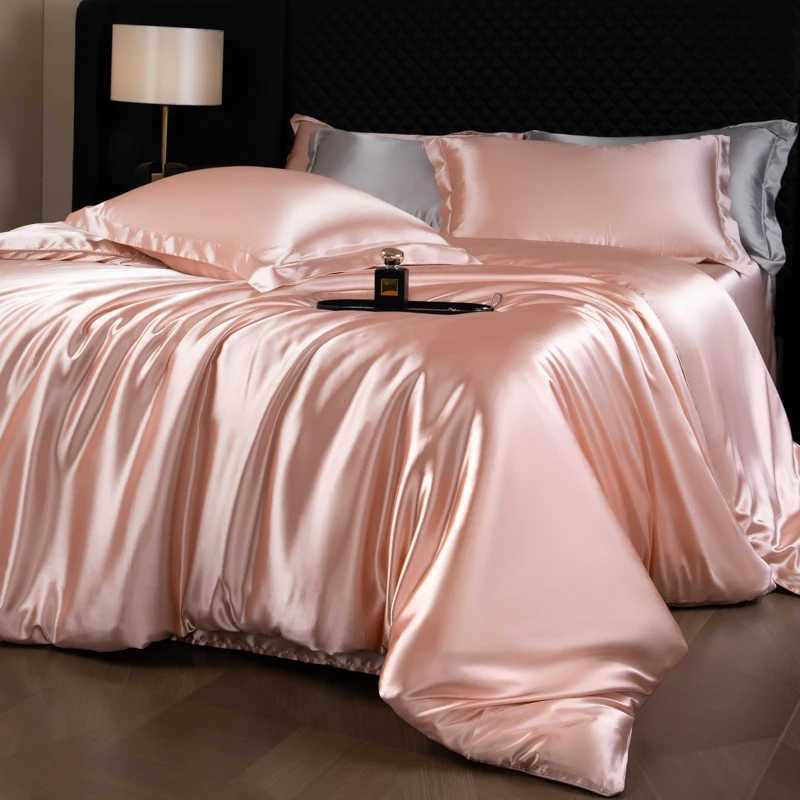
Illuminating Silk: Strategic Lighting to Enhance Color and Texture
The magic of silk colors truly comes alive through proper lighting. Understanding how different light sources interact with silk-inspired elements is essential for maximizing their impact:
Light Source Considerations
Different types of lighting dramatically affect how silk colors appear:
- Natural daylight: Provides the truest representation of silk colors but changes throughout the day—silk walls that appear champagne in morning light might look more golden by sunset
- Incandescent lighting: Adds warmth and enhances red/orange undertones in silk colors
- LED lighting: Choose warm-white LEDs (2700-3000K) to maintain silk’s richness; cooler LEDs can make silk colors appear flat
- Halogen lighting: Creates beautiful highlights on silk surfaces but generates heat that may damage actual silk fabrics over time
Strategic Positioning
How you position lighting can dramatically enhance silk’s reflective qualities:
- Angle wall sconces or track lighting to wash down silk-finish walls, emphasizing their subtle texture
- Position table lamps with silk or silk-like shades to create warm, diffused light pools
- Install uplighting behind furniture to create dramatic backlighting effects on silk drapery
- Consider picture lights to highlight silk wall hangings or artwork with silk elements
Creating Mood
Lighting can transform silk-inspired spaces throughout the day:
- Layer lighting sources (ambient, task, and accent) to create flexibility
- Install dimmers to adjust the intensity of light on silk surfaces
- Consider how evening lighting might enhance the intimacy of silk-rich spaces
- Use directional lighting to highlight specific silk elements as focal points
Seasonal Adjustments
The appearance of silk colors changes with seasonal lighting variations:
- In winter months with less natural light, warm-toned lighting helps maintain silk’s rich appearance
- Summer’s abundant natural light allows for showcasing silk’s full color spectrum
- Consider seasonal lamp shade changes to complement your bedroom design with silk linens
With thoughtful lighting choices, silk colors become dynamic elements that evolve throughout the day and seasons, creating living spaces that respond to light in captivating ways.
Maintaining the Silk Aesthetic: Care and Longevity
Creating a silk-inspired space is an investment in beauty and atmosphere—protecting that investment requires proper care and maintenance:
Protecting Silk Surfaces
Silk fabrics and silk-inspired finishes require protection from:
- Sun damage: UV rays can fade silk colors rapidly—consider window films, blinds, or UV-protective treatments for windows near valuable silk pieces
- Moisture: Actual silk is vulnerable to water staining—keep silk upholstery away from humid areas and address spills immediately
- Friction: Silk fibers can be damaged by rough handling—place silk items away from high-traffic areas
Cleaning Recommendations
Different silk applications require specific care approaches:
- Silk wall coverings: Dust gently with a soft cloth; never use wet cleaning methods
- Silk upholstery: Vacuum with a soft brush attachment; consult professionals for stain removal
- Silk bedding: Follow manufacturer instructions—many modern silk sheets are washable on gentle cycles with mild detergent
- Painted silk-finish walls: Clean with a soft cloth and non-abrasive cleaners recommended for your specific paint type
Seasonal Refreshing
Keep your silk-inspired spaces looking their best year-round:
- Rotate decorative silk pillows and throws seasonally to prevent uneven wear
- Consider seasonal color adjustments—perhaps deeper silk tones in winter, lighter ones in summer
- Professional steaming can refresh silk draperies and upholstery without washing
- Inspect silk items regularly for signs of wear or damage
Professional Maintenance
Know when to seek expert help:
- Fine silk wallcoverings should be professionally installed and maintained
- Valuable silk upholstery pieces benefit from professional cleaning
- Antique silk items may require specialized conservation techniques
- Consider professional color consultation when selecting silk-inspired paint colors for your home
With proper care, white silk sheets and other silk elements will maintain their beauty and impact for years, making them sustainable choices for luxury interior design.
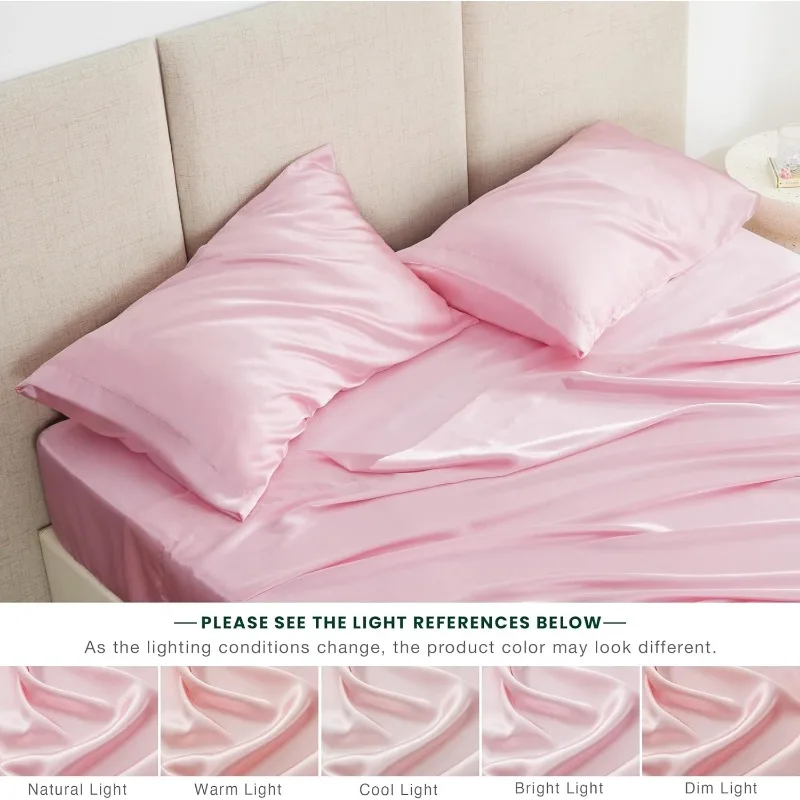
Beyond Decoration: The Sensory Benefits of Silk Colors
The impact of silk-inspired interiors extends far beyond mere visual appeal. These spaces create profound sensory experiences that affect our psychological well-being:
Emotional Impact
Silk colors influence mood in subtle but powerful ways:
- Soft champagne and pale gold silk tones promote feelings of quiet luxury and contentment
- Deeper jewel-toned silk colors can energize spaces, stimulating creativity and conversation
- Cool silk blues and lavenders create sanctuary-like environments that reduce stress hormones
- The subtle light play of silk finishes adds visual interest that keeps spaces feeling fresh and engaging
Creating Atmosphere
Different silk palettes support different activities and intentions:
- Reading nooks benefit from the gentle luminosity of warm silk tones that reduce eye strain
- Dining areas come alive with rich silk colors that stimulate appetite and conversation
- Bedrooms wrapped in soft silk textures and colors signal to the brain that it’s time for rest and rejuvenation
- Home offices with silk accents balance professionalism with comfort for focused productivity
Multisensory Experience
True luxury appeals to multiple senses:
- The visual richness of silk colors complements their tactile appeal
- Spaces with silk elements tend to have superior acoustics, absorbing harsh sounds
- The perception of temperature shifts with color—warm silk tones can make rooms feel cozier
- Even our sense of time can be affected, with silk-adorned spaces encouraging us to slow down and savor moments
When styling silk sheets in the bedroom, you’re not just decorating—you’re creating an environment that nurtures well-being through subtle sensory cues, transforming everyday moments into experiences of comfort and beauty.
Is Silk Right for Every Space? Adapting the Luxury Aesthetic
Can silk colors work in minimal or rustic designs?
Absolutely! Silk-inspired colors can complement minimalist spaces by adding subtle depth without clutter. In rustic environments, silk accents create beautiful contrast with rougher textures like reclaimed wood or stone. The key is moderation—perhaps silk pillows on a rustic sofa or a silk-finish accent wall in an otherwise minimalist room.
How can I incorporate silk elements in high-traffic or family-friendly spaces?
Focus on silk-inspired colors in durable materials rather than actual silk fabrics. Consider silk-look polyester blends for family room draperies, pearl-finish washable paint for hallways, or silk-alternative bedding in children’s rooms. Many vegan silk bedding options offer the aesthetic appeal of silk with improved durability.
Full-size Silk Sheets, King Size Silk Sheets, Queen Size Silk Sheets, Twin Size Silk Sheets, Washable Silk Sheets
Price range: $95.95 through $178.37 Select options This product has multiple variants. The options may be chosen on the product page100% Silk Sheets, Green Silk Sheets, King Size Silk Bedding Set, Mulberry Silk Bedding Sets, Queen Size Silk Bedding Set
Price range: $1,246.21 through $1,615.22 Select options This product has multiple variants. The options may be chosen on the product pageEucalyptus Silk Bedding Sets, Eucalyptus Silk Sheets
Price range: $360.24 through $393.60 Select options This product has multiple variants. The options may be chosen on the product pagePink Silk Sheets, Twin Size Silk Sheets
$171.80 Select options This product has multiple variants. The options may be chosen on the product pageFull-size Silk Sheets, Pink Silk Sheets
$136.31 Select options This product has multiple variants. The options may be chosen on the product pageFull Silk Bedding Set, King Size Silk Bedding Set
Price range: $120.99 through $190.49 Select options This product has multiple variants. The options may be chosen on the product page
Are there budget-friendly alternatives that capture the silk aesthetic?
Definitely! Consider these options:
– Satin-finish paint rather than actual silk wallcovering
– Polyester or rayon blends with silk-like sheen for window treatments
– A single luxury silk pillow as an accent amid less expensive complementary pieces
– Quality silk-alternative bedding that captures the visual qualities without the price tag
Do silk colors work year-round or are they seasonal?
Silk-inspired color schemes can work beautifully throughout the year with small seasonal adjustments. In winter, layer in deeper tones and additional textures for warmth. In summer, emphasize the lighter elements of your palette and reduce heavy textiles. The adaptability of silk colors—which shift subtly with changing light—makes them especially suitable for year-round use.
How to Start Your Silk Color Journey: A Step-by-Step Approach
Assess your existing space with fresh eyes. Note the natural lighting, architectural features, and elements you must work around. Take photos at different times of day to understand how light moves through your rooms.
Select your silk-inspired color palette based on the atmosphere you want to create. Begin with a main color (perhaps a silk neutral) and add 2-3 complementary colors. Collect paint chips, fabric swatches, and images that represent your vision.
Start small with low-commitment changes. Perhaps add silk-inspired throw pillows, a painted accent wall, or matching silk duvet sheet sets to your bedroom before making larger investments.
Build in layers, beginning with your largest surfaces (walls, floors) and working toward smaller accessories. This allows you to adjust your vision as you see how colors interact in your actual space.
Pay attention to transitions between rooms, ensuring colors flow logically from one space to the next. Consider how one silk-inspired color might connect to another through careful planning.
Evaluate the results in different lighting conditions before proceeding to the next element. What looks perfect at noon might appear entirely different by evening lamplight.
Adjust as needed, remembering that creating truly harmonious spaces is an iterative process. The beauty of silk-inspired design lies in its subtlety and nuance—qualities that may reveal themselves gradually as you live with your evolving spaces.
By following these steps, you’ll create rooms that capture the timeless elegance of silk while expressing your personal style. The result will be spaces that feel luxurious yet livable, sophisticated yet welcoming—true sanctuaries that nurture both the eye and the spirit.

